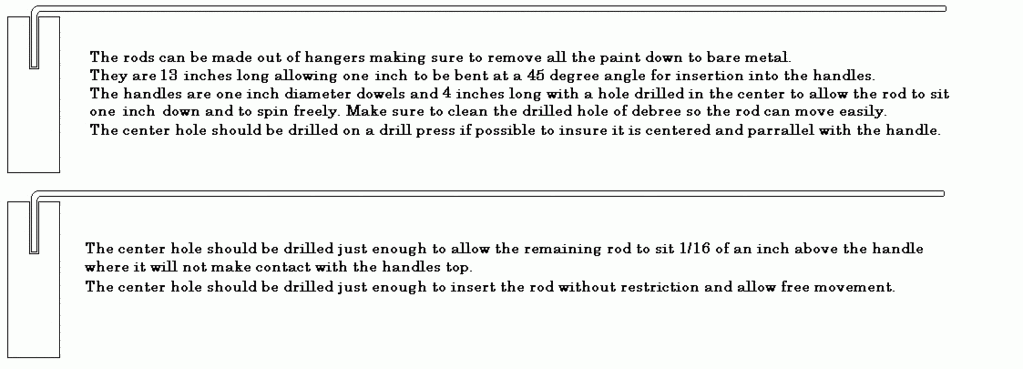This tool has been around for a long time. I was introduced to it years ago by my uncle who was trying to locate an old well on his ranch that had no surface evidence. I laughed at it in disbelief telling my uncle he would not find water with it. He never said a word except told me how to hold it and told me where to walk and wait for it to move. I was much younger and would not believe it would indicate where there was water. I walked around kinda giggling to myself thinking this was silly until the rods seemed to move. The rods did end up moving but it was my belief that I moved them. My uncle told me to back up and walk forward again and in doing so the rods moved again. I had to keep trying this because I didn't want to believe it. After many attempts to disprove this method and this tool I was convinced when we dug up an old well pipe. I was amazed and tested it in many ways.
I made myself one a few weeks ago and saturday went through the same process with my son. I found my septic and to really show my son that it does work I had him dig a small hole and fill it with water then cover it over. I asked him to tell me the general area it was located in and I walked about 4 minutes until the rods started to react and eventually got the rods to move inward until they came together. As my son watched I moved backwards until I could get the rods to point out straight then I moved towards the hole again and the rods moved in. He had to take it from me and do his own tests.
It really does work but I don't know exactly how. My uncle has stated that this tool can locate water several feet below the surface. My tests have confirmed it can find water 7 feet underground, at least thats where the septic tank is. I will keep it as a possible buggout tool.
Up here where I live underground springs can vary in depth. I have two wells, one had water at 820, the other, water was at 85 feet and they are only about 600 feet away from eachother.
wouldn't that be great, to use this and find a shallow spring just under the surface.
I'd like to take it south to the desert and try it out. I have dug only 2.5 feet east of palmdale in the desert and run into water.
Anyway, I thought I would share this cool tool. give it a try and you may surprize yourself.
It requires (2) two units, one for each hand.

I made myself one a few weeks ago and saturday went through the same process with my son. I found my septic and to really show my son that it does work I had him dig a small hole and fill it with water then cover it over. I asked him to tell me the general area it was located in and I walked about 4 minutes until the rods started to react and eventually got the rods to move inward until they came together. As my son watched I moved backwards until I could get the rods to point out straight then I moved towards the hole again and the rods moved in. He had to take it from me and do his own tests.
It really does work but I don't know exactly how. My uncle has stated that this tool can locate water several feet below the surface. My tests have confirmed it can find water 7 feet underground, at least thats where the septic tank is. I will keep it as a possible buggout tool.
Up here where I live underground springs can vary in depth. I have two wells, one had water at 820, the other, water was at 85 feet and they are only about 600 feet away from eachother.
wouldn't that be great, to use this and find a shallow spring just under the surface.
I'd like to take it south to the desert and try it out. I have dug only 2.5 feet east of palmdale in the desert and run into water.
Anyway, I thought I would share this cool tool. give it a try and you may surprize yourself.
It requires (2) two units, one for each hand.


















































